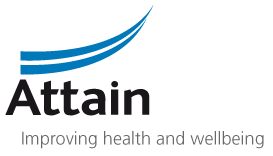With Covid-19 bringing modelling into the limelight, Attain’s analysts have been giving some thought to the common questions they get asked about data models.
What will the model do? What won’t it do? Why do we need a model? Why are they sometimes flawed? What can we do to make them more accurate? What caution should we use when interpreting them?
Why do we use models?
A model is designed to answer a specific question or to inform decision making. Models are developed, not to predict the future, but to learn about possible and likely futures states and what can be done to achieve these future states without having to experience the adverse effects or having to do an expensive pilot.
What is a model?
In its simplest form a model can just be an equation describing the relationship between two variables, for example: admissions per year and occupied beds. A more complex and dynamic version of the equation would include how admissions and occupancy change over time. Model complexity is often determined by several factors that need to be considered – these factors can include:
- population growth
- local or national interventions
- clinical
- technological
- political
- unforeseen and unknown factors
Models can be very sensitive to these factors. Not knowing all factors can result in incorrect predictions and, consequently, the wrong course of action.
For this reason, it is important to think in terms of scenarios. Scenarios provide a range in which the likely solution will lie. These different scenarios can be used to show how well, or badly, things might go for a given set of circumstances and play directly into the model. These models are generally built by analysts and data scientists. Designing and building a model, in the first instance, requires good technical skills but the biggest challenge to the modeller is often the preparation. That is the part of the modelling that requires engagement to establish research question, scope, variables, factors, relationships, assumptions, availability of data, data quality and possible scenarios. You can have strong technical skills but neglect this and you’re risking the success of the model.
The features of a good model
It is critical that a model is developed in collaboration with industry specialists. Attain projects are always delivered on this basis – with an Attain analyst working in collaboration with our NHS partners to develop models and identify solutions. These clinical and operational experts bring local and specialist knowledge to assist the technical analyst. This joined up approach means that: formulating the inputs and assumptions, validating the model to ensure the model is realistic, and incremental improvements to accuracy, are all a part of the process. This method of working alongside our clients means they have joint ownership and they understand the model and its results. It gives the model credibility, which is important for creating confidence and buy-in from wider stakeholders.
Attain’s modellers
Attain’s modellers are deeply experienced in managing health and care data. They develop models every day – underpinning almost all our projects. These include spreadsheet models that are better for models of a static nature and simulation models that are better at dealing with the dynamic nature that a health care problem represents.
Whether a model is good or not, depends on what is expected of the model. Do we want a prediction of expected bed usage for a moment in time, or do we want to know the composite impact of a range of interventions/measures on demand over a certain time period, and how this direction of travel changes subject to different scenarios? Whatever the objective of your model, validation is key. Validation can be done by trying to predict historical demand, and the outcome used to refine and improve the model.
Attain has team of experienced analysts, working with over 50 industry experts with varying backgrounds and track records. Together, they build various types of model. If you would like more information about how our teams can help you with your modelling needs, from demand and capacity, to workforce and estates, get in touch via our contact form.

